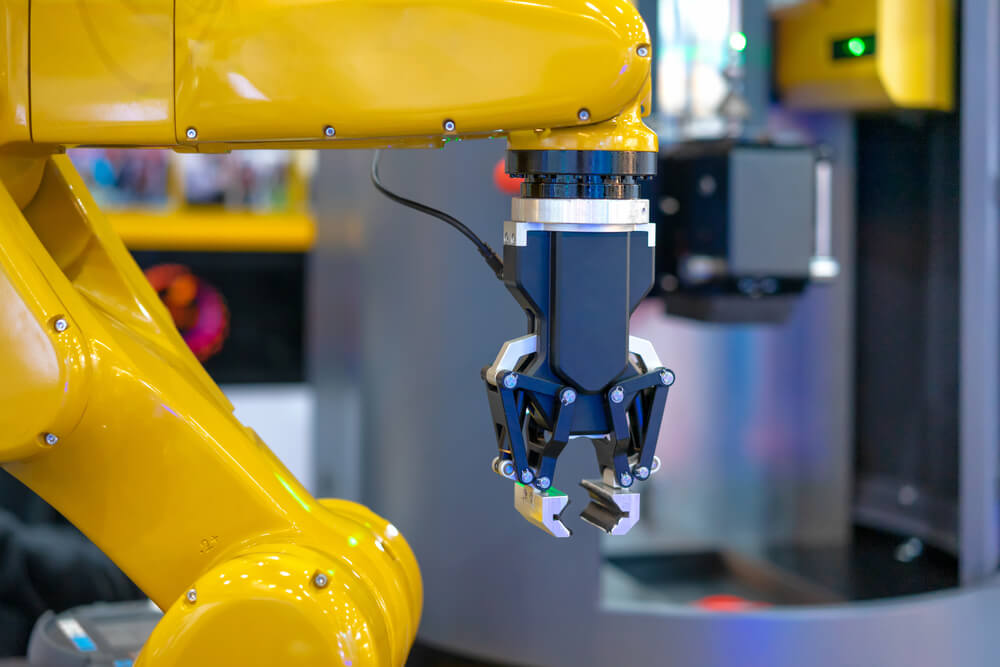Industrial grippers are devices that allow robots to pick up, hold, and place objects. Grippers let manufacturers automate key processes, such as assembly lines and conveyor systems. If you compare grippers to human parts, the gripper would be the arm that gives a hand the ability and strength to grab and move things.
In the industry, fingered tooling, or jaws, is the name given to the tool attached to grippers that hold an object. Grippers come in a variety of styles and powered designs. Styles vary from parallel, three-finger, and angled.
There are also three choices of power available: pneumatic grippers, electromechanical grippers, and hydraulic grippers. This article explains the difference between the most common gripper (Pneumatic) and the least common gripper (Hydraulic).
Pneumatic Grippers
Pneumatic grippers consist of a piston inside a hollow cylinder, which is moved with pressure from an external compressor or manual pump. As pressure increases, a linear force is created by the cylinder moving along the piston axis. When fluid is supplied to the other side of the piston, it returns to its original position.
This gripper type requires compressed air to function and can operate in tight spaces while providing a fast response time. It is a low-cost gripper option and has an extensive grip force range. Although, it is not recommended for facilities that produce a lot of low-volume/high-mix items.
Hydraulic Grippers
Hydraulic grippers operate like pneumatic grippers. However, instead of pressurized air, it uses an incompressible liquid to move the cylinder. Hydraulic grippers are ideal for heavy-duty use because it provides more gripping power than a pneumatic gripper. However, they require higher maintenance and are unsuitable for medical applications.
Difference Between Pneumatic Grippers and Hydraulic Grippers
The main reason why hydraulic grippers are not as common as pneumatic grippers is due to the high maintenance costs that come with it. These grippers are excellent for lifting heavy amounts of weight; however, the cost of safety, ease of deployment, mobility, and footprint rarely meets the industry budget. Hydraulic grippers use liquid and oiled parts, making maintenance complex and time-consuming. Consequentially, this will require skilled personnel to take care of these systems.
In comparison, pneumatic grippers are preferred due to their easy operation and maintenance. These grippers do not require previous experience to operate. Since they work with air rather
than oil, they can be used in clean environments like medical applications. It is important to stress, however, if they fail, they can easily contaminate the air.
Pneumatic grippers offer more precise and accurate grip than hydraulic grippers. Nevertheless, pneumatic grippers have limitations as well. They do not pose a force control as accurately as other grippers. Since it operates on pressurized airflow, its use can be challenging when the air pressure is low.
Why Choose PFA Inc.?
PFA Manufacturer has everything you need for modular automation. We provide a nested solution for parts assembly from grippers, grippers arms, compliance devices, and overload wrists. Bot of our shelf and custom solutions are available to make your application a success. For more information contact us or give us a call.


